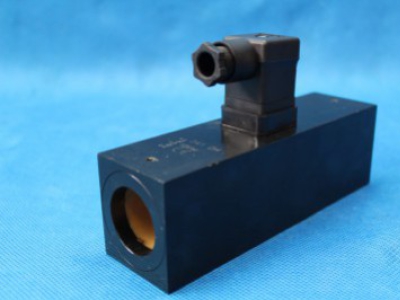Valve coil
Electromagnetic coil is the main element of the solenoid valves. It consists of a core and scrolls. The task of the solenoid coil is to create an electromagnetic field and induce voltage. A special element moves inside the electromagnetic field that controls the opening and closing of the membrane. The inductance of the valve coil depends, among others from the magnetic permeability of the core. A condition that must be met for the solenoid valve coil and valve to work flawlessly is to feed them into media of adequate density and free of contaminants.
Valve coil, i.e. an electromagnet, controls the operation of the valve. As already mentioned, the solenoid valve uses the electromagnetic field phenomenon to operate. An electric signal is sent, which is controlled by a coil, and then this signal is transmitted to the valve, which causes the position to change from open to closed and vice versa. This action allows control of the flow of gaseous or liquid medium in the system. The medium in the system can only flow in one direction because the solenoid valves are one-way devices.
.JPG)
.JPG)
.JPG)
On the market you can find a wide variety of valve coils that differ in voltage, construction, power consumption and size. Most often, however, on the market you can get valve solenoid coils that have a lifetime of about 5000 h, which of course depends on the operating conditions. To extend the life of the solenoid valve, do not leave it energized for too long, which is why the coil with which the solenoid valve is equipped is so important.
How does the coil work on the solenoid valve? When the coil lacks voltage, the jumper closes the main valve. When voltage appears on the coil, the force of the electromagnet pulls the armature into the coil and the main hole is opened. The task of the valve coil is to convert electricity into linear motion. Solenoid valve coils are available for both direct and alternating current. Although the valve coil can be adapted to work with any voltage, most commonly available voltages are 6 volts direct current, 12 volts direct current, 24 V DC, 24 V AC, 120 volt AC, 220/240 V AC. The advantage of a low-voltage coil is, of course, electrical safety, while most industrial machines use solenoids with 24 VDC coils.
The solenoid coil is integral in the operation of a solenoid valve. It is what converts the electric current into a magnetic field which in turn allows the operation of the solenoid valve.
_1.JPG)
.JPG)
.JPG)
_1.JPG)


.JPG)
.JPG)